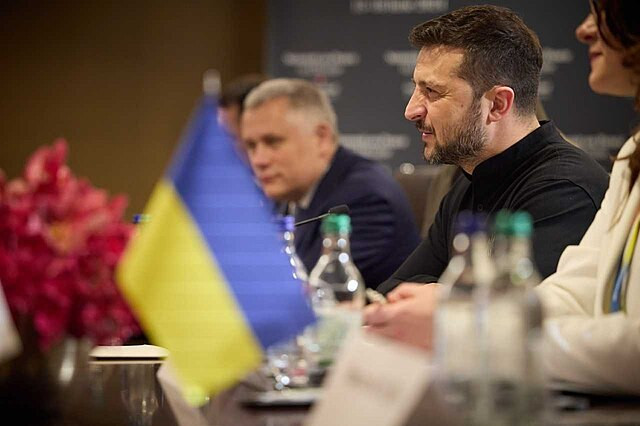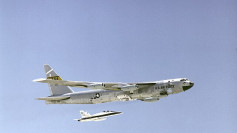Ukraine claimed to have destroyed a Russian Su-34 fighter-bomber and an ammunition depot at the Morozovsk airfield in Russia's Rostov region. This attack, which occurred on Saturday, also likely damaged two additional Su-34 warplanes, according to satellite imagery cited by Kyiv's military intelligence unit.
The strike on the airfield, situated approximately 165 miles from the frontline, represents a notable achievement for Ukrainian forces as they continue to push back against Russian aggression. The Ukrainian military has been increasingly successful in targeting key Russian assets, leveraging a combination of advanced weaponry and strategic planning.
This development coincides with Ukrainian President Volodymyr Zelensky unveiling the first Western-supplied F-16 warplanes in Ukraine. Standing in front of two of the jets at an undisclosed airbase, Zelensky announced, "These jets are in our sky and today you see them." The arrival of the F-16s, which flew overhead during the announcement, is expected to significantly boost Ukrainian morale on the frontline, which has been under relentless Russian attacks.
The introduction of these advanced fighter jets is a pivotal moment for Ukraine. Ukrainian commander-in-chief Oleksandr Syrskyi emphasized the impact, stating, "The arrival of the F-16s means that more occupiers will be neutralized." The F-16s represent a substantial upgrade in Ukraine's air capabilities and a symbol of the increasing support from NATO allies.
However, this escalation has not gone unnoticed by Moscow. Russian President Vladimir Putin has warned that Russia might consider launching strikes at facilities in NATO countries if they host the warplanes used in Ukraine. This threat underscores the high stakes involved in the conflict and the potential for broader regional repercussions.
In a coordinated effort to weaken Russian infrastructure, Ukrainian forces also targeted a key oil hub in Russia's southern Rostov region using drones. The attack resulted in a massive blaze at an oil depot in the city of Azov, with video footage showing a significant column of black smoke rising into the sky. No casualties were reported, but the impact on Russia's oil logistics is notable.
In addition to the drone strike in Rostov, Ukrainian forces used U.S.-made ATACMS and Storm Shadow missiles to strike a fuel hub in occupied Luhansk. The attack reportedly targeted fuel storage warehouses, with the Kremlin-installed head of the self-proclaimed region, Leonid Pasechnik, stating that air defense systems downed four of the twelve missiles fired.
The strikes on these vital fuel depots are part of an ongoing Ukrainian campaign that began in January, aiming to disrupt Russia's oil supply chain. Reports indicate that at least 40 Russian oil depots and refineries have been attacked by drones since the beginning of the year. These attacks have been primarily attributed to Ukraine's Security Service (SBU) and Military Intelligence Directorate (GUR).
Despite requests from U.S. officials for Ukraine to refrain from targeting oil hubs to avoid disrupting the global fuel market, Ukraine has continued its strategic assaults. In March, Ukrainian Deputy Prime Minister Olha Stefanishyna justified these attacks, stating that Russian oil refineries are legitimate military targets as they support President Vladimir Putin's war economy.





